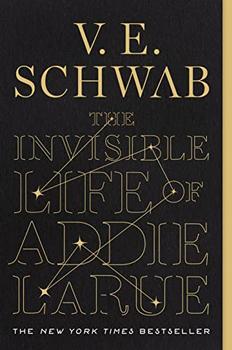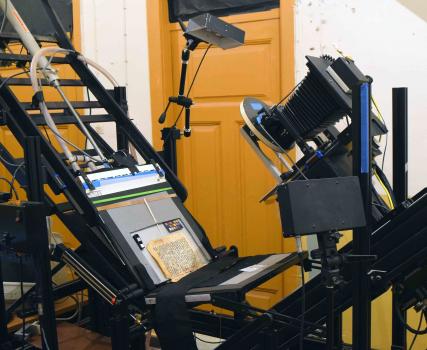Summary | Excerpt | Reading Guide | Reviews | Beyond the Book | Read-Alikes | Genres & Themes | Author Bio

This article relates to The Invisible Life of Addie LaRue
 The heroine of V.E. Schwab's novel, The Invisible Life of Addie LaRue, often takes notice of what she refers to as "palimpsests," which she defines as instances where the past is blotted out and written over by the present.
The heroine of V.E. Schwab's novel, The Invisible Life of Addie LaRue, often takes notice of what she refers to as "palimpsests," which she defines as instances where the past is blotted out and written over by the present.
The word palimpsest comes from the Greek palimpsestos, meaning "scraped again." Strictly speaking, the term refers to a piece of parchment that has been "recycled" — cleaned of its original text and overwritten in the interest of economy — but on which traces of the earlier document can still be observed.
The technique was relatively common in antiquity, when writing media such as parchment (made from animal skin) were scarce and expensive. Existing text would be erased by literally scraping off the ink, followed by treatment with a concoction made from oat bran and milk. The material would be dried, after which it would be available for reuse. The erasure was often incomplete, however, and over time the earlier writing would reappear faintly but legibly enough for scholars to make out the older text (referred to as scriptio inferior, aka the "underwriting").
Some of the resulting palimpsests have provided historians with the earliest known copies of important texts (in some cases, the only copy). The most famous example is an introduction to Roman law written in 161 CE by a legal expert named Gaius entitled Institutes. Overwritten by a copy of the works of St. Jerome, the underlaying writing was detected by German historian B.G. Niebuhr in 1816. While fragments of Institutes were previously available, the newly-discovered palimpsest provided a nearly complete copy of the work, giving scholars a clearer idea of many aspects of Roman law that hadn't previously been understood.
During the 19th century, a push was made to discover and expose these hidden writings, and people began experimenting with various chemicals that would help reveal the scriptio inferior. Unfortunately, many of these concoctions damaged or destroyed the manuscripts, ultimately making them illegible. A less harmful technique using ultraviolet light and photography was developed in the 20th century. Today, spectral imaging is used, a photographic process that allows the researcher to digitally enhance the underlying text, thereby making it more legible without affecting the original.
Over time, "palimpsest" has evolved to mean anything that has replaced something older, but in which traces of the previous use can be observed. Archaeologists use the term when referring to a site containing layers of detritus left by multiple civilizations over time, or to structures repurposed as ideologies changed (for example, the name of one deity effaced and replaced by a new one as a temple becomes the property of a conquering culture). It's also become a popular concept in architecture, where remodels may replace parts of a building or neighborhood but aspects of the original structures can still be seen. Other modern examples would include audiotapes that have been reused but on which you can still hear echoes of an earlier recording, and computer hard drives where newer information has overwritten older data but failed to completely obliterate it.
Spectral imaging equipment, courtesy of Sinai Palimpsests Project
Filed under Cultural Curiosities
![]() This "beyond the book article" relates to The Invisible Life of Addie LaRue. It originally ran in October 2020 and has been updated for the
April 2023 paperback edition.
Go to magazine.
This "beyond the book article" relates to The Invisible Life of Addie LaRue. It originally ran in October 2020 and has been updated for the
April 2023 paperback edition.
Go to magazine.
Your guide toexceptional books
BookBrowse seeks out and recommends the best in contemporary fiction and nonfiction—books that not only engage and entertain but also deepen our understanding of ourselves and the world around us.